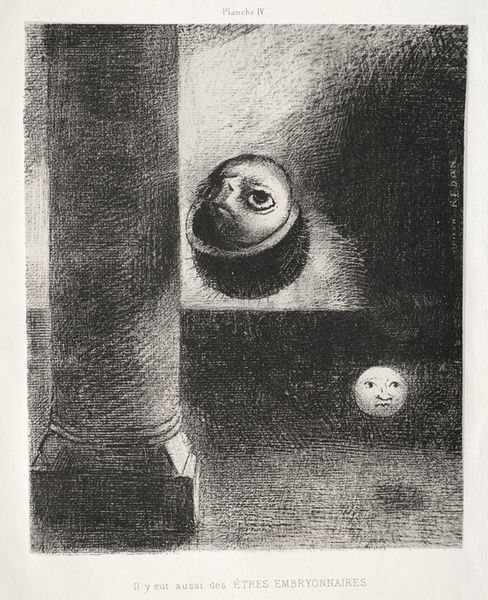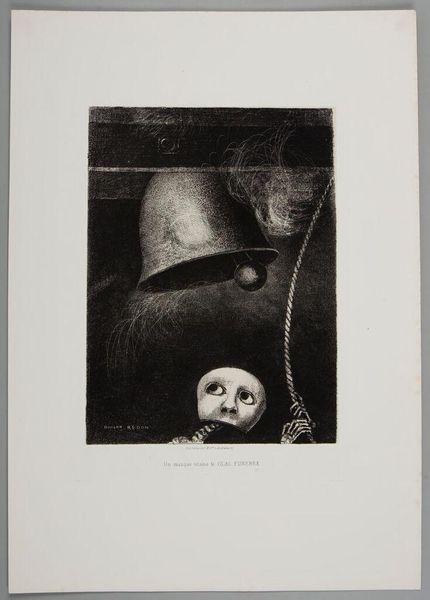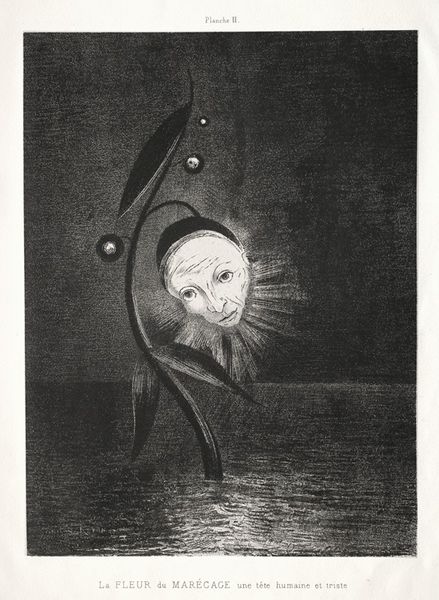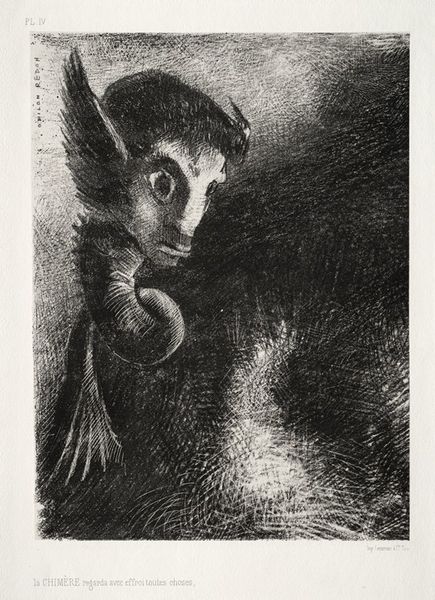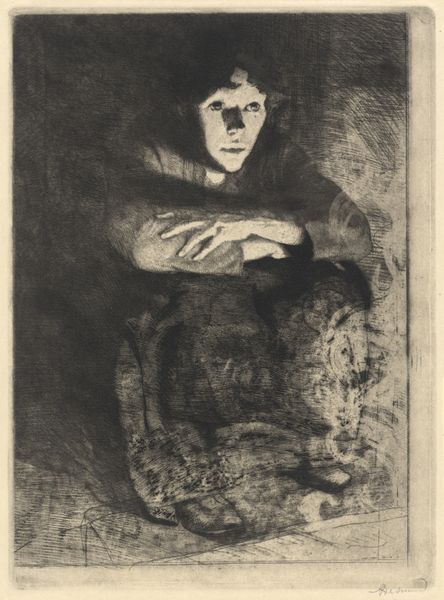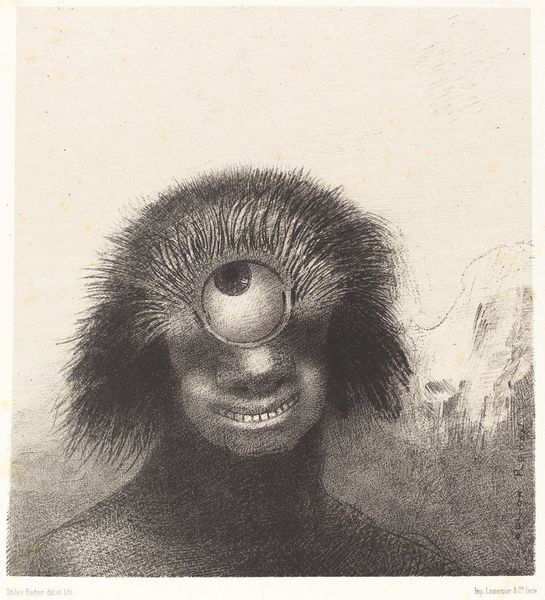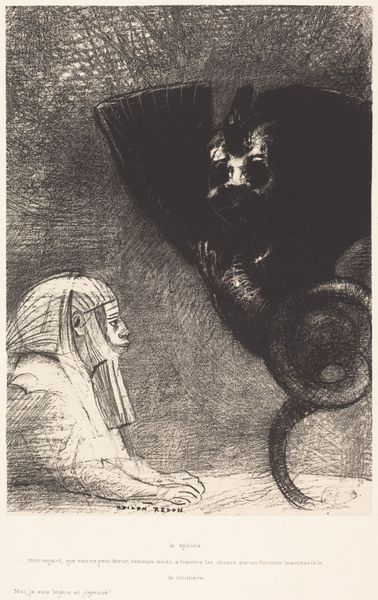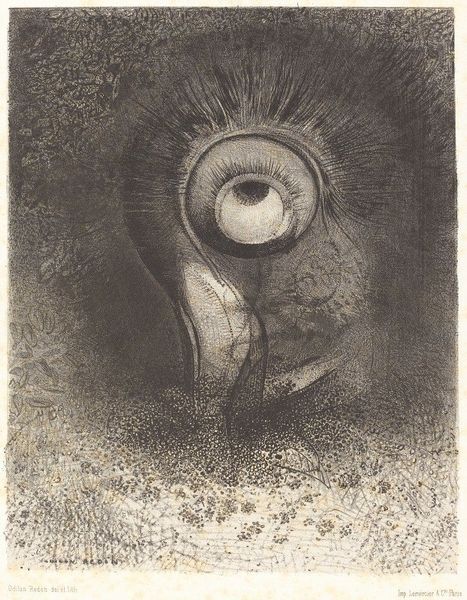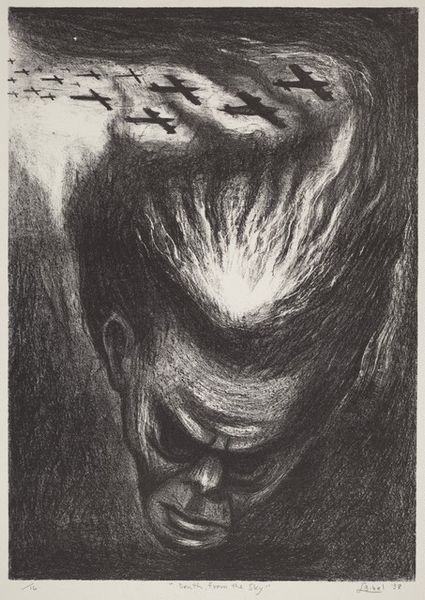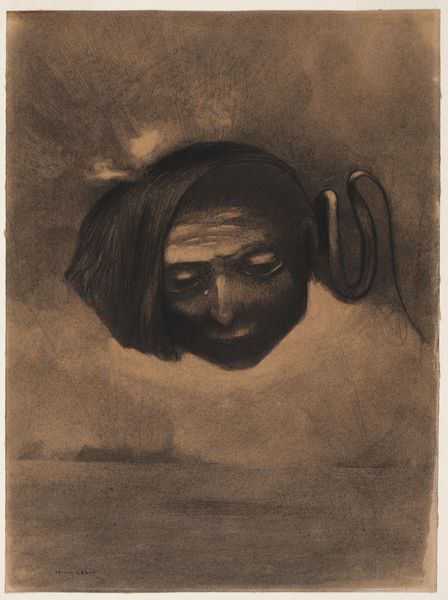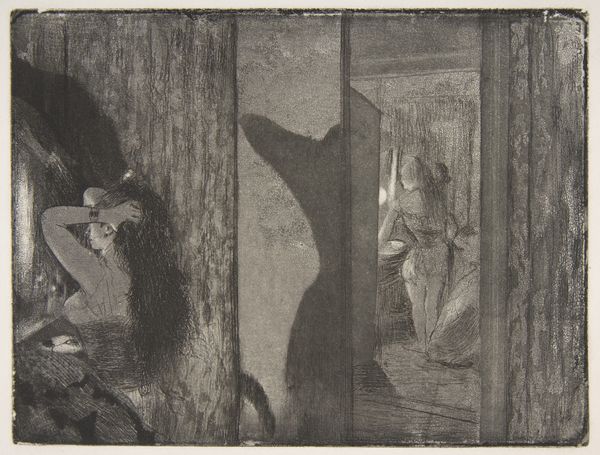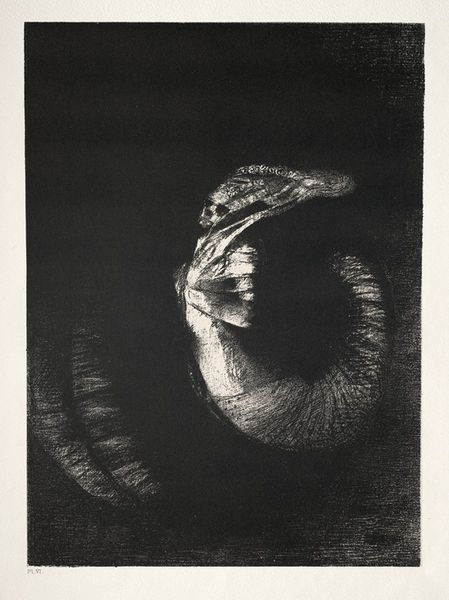
A Mask Sounds the Funeral Knell, plate three from To Edgar Poe 1882
0:00
0:00
drawing, lithograph, print, etching, paper, ink
#
drawing
#
lithograph
# print
#
etching
#
landscape
#
fantasy-art
#
charcoal drawing
#
figuration
#
paper
#
ink
#
momento-mori
#
france
#
limited contrast and shading
#
line
#
symbolism
#
post-impressionism
Dimensions: 260 × 193 mm (image/chine); 440 × 305 mm (sheet)
Copyright: Public Domain
Curator: I find myself immediately drawn to the somber mood conjured by this haunting image. Editor: It’s incredibly effective. This is “A Mask Sounds the Funeral Knell, plate three from To Edgar Poe,” created by Odilon Redon in 1882. Redon, of course, deeply admired Poe. We're looking at a lithograph, a print on paper, currently residing here at the Art Institute of Chicago. Curator: A lithograph seems the perfect medium to capture this almost dreamlike quality. There’s something ghostly about it, the way the bell hangs suspended above that… is it a skull wearing a mask? Editor: Precisely. It evokes this incredible tension between representation and the abject real. Redon explores the instability of identity and societal facades by contrasting a beautiful but inexpressive mask with death. The skeleton, typically hidden, peers out, claiming presence and reminding us of mortality. Curator: The skeletal figure introduces a strong element of the macabre, reminding me of Memento Mori traditions in art history, serving as allegories on mortality and encouraging viewers to meditate on death and impermanence. What strikes me here is that death isn't the full picture; there's a mask, obscuring the features beneath. Editor: The positioning is potent, too. The looming bell above and the expectant face of the mask create a distinct visual hierarchy reflecting societal pressures on visibility, agency, and who has the "right" to express grief. Think about those societal expectations during the late 19th century, particularly around public expressions of mourning and what identities are allowed such expression. Curator: Do you think Redon was also commenting on the commodification of mourning practices? After all, the Victorian era was known for its elaborate, sometimes performative, displays of grief. The mask becomes a prop, almost. Editor: That’s a valid point! He was likely observing and critiquing the ways social structures dictate and control emotional experiences. Redon wasn’t interested in straightforward depictions; he wanted to delve into the complexities and contradictions of the human condition. It speaks to themes of suppression and forced conformity, echoing issues that resonate just as loudly today. Curator: It really highlights how art can transcend its immediate context to address broader, timeless struggles about identity, representation, and control. Editor: Exactly. "A Mask Sounds the Funeral Knell" isn’t simply a depiction of mortality; it’s a powerful commentary on the social scripts that confine and define us.
Comments
No comments
Be the first to comment and join the conversation on the ultimate creative platform.
